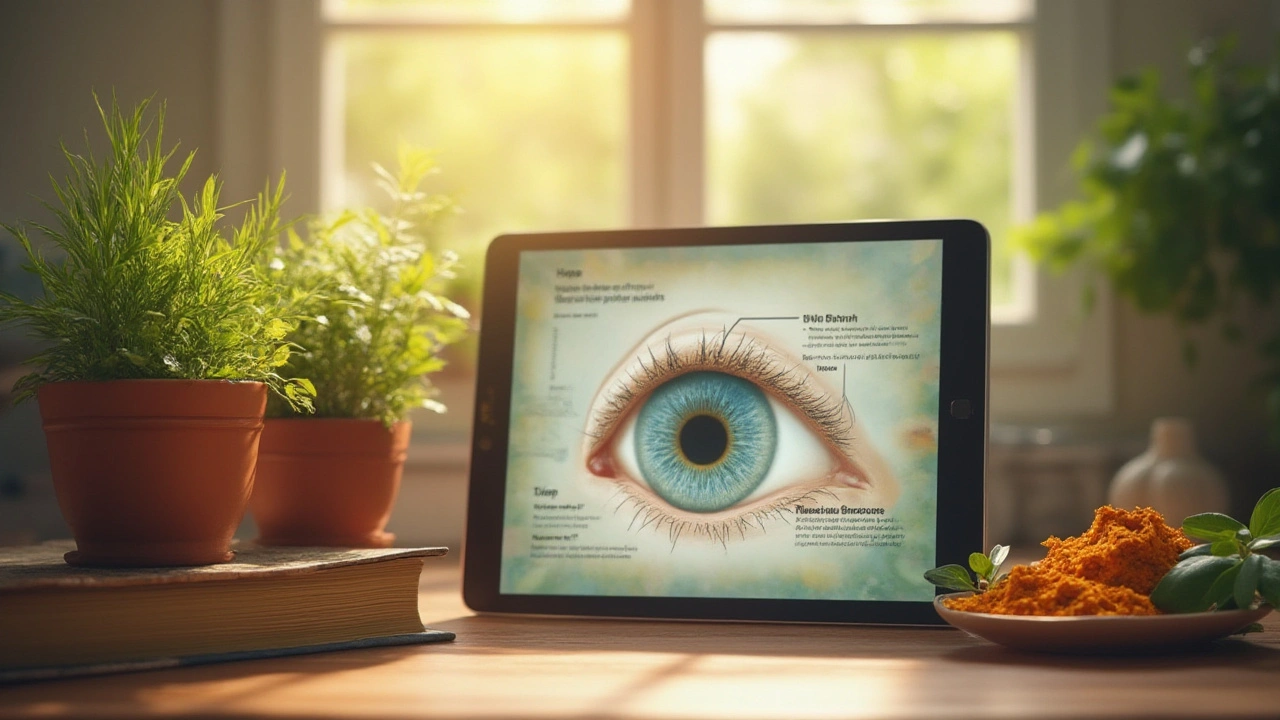Natural Glaucoma Remedies: Simple Steps to Support Your Eyes
If you’ve been told you have glaucoma, the first thing you’ll hear is “lower your eye pressure.” Most people reach for prescription drops right away, but there are natural tools that can work alongside meds. Below are practical, no‑nonsense options you can try today.
Herbal Helpers for Eye Pressure
Several herbs have shown promise in easing intra‑ocular pressure. Bilberry and ginkgo biloba are the most talked about. Bilberry is rich in anthocyanins, which help protect the tiny blood vessels in the eye. A daily dose of 80‑120 mg of a standardized extract is a common starting point. Ginkgo, on the other hand, improves blood flow and may help the eye drain fluid more efficiently. Aim for 120‑240 mg per day, split into two meals.
Green tea isn’t just a morning pick‑me‑up—it contains catechins that act like antioxidants for eye cells. Brew two cups a day and skip the sugar to keep it truly beneficial. Another easy herb is turmeric; its active compound curcumin reduces inflammation, which can indirectly support eye pressure. Add a half‑teaspoon of ground turmeric to smoothies or soups, and pair it with a pinch of black pepper for better absorption.
DIY Lifestyle Tweaks
Diet matters more than you think. Foods high in omega‑3 fatty acids, like salmon, sardines, and flaxseeds, help keep the fluid dynamics in the eye balanced. Try to eat at least two servings of fatty fish per week or sprinkle a tablespoon of ground flaxseed into oatmeal.
Magnesium is a quiet hero. Low magnesium can tighten blood vessels, making it harder for fluid to exit the eye. Include magnesium‑rich foods such as pumpkin seeds, spinach, and dark chocolate (70% cacao or higher). A small handful of seeds or a cup of cooked greens a day does the trick.
Physical activity also plays a role. Aerobic exercise—walking, cycling, swimming—for 30 minutes most days helps lower overall blood pressure, which often translates to lower eye pressure. Even simple eye‑movement exercises, sometimes called “eye yoga,” can improve drainage. Try focusing on a point 20 feet away for 20 seconds, then look at something close for 20 seconds; repeat five times.
Stay hydrated, but avoid gulping down huge amounts in one sitting. Your eyes need fluid, but rapid spikes in blood volume can raise pressure temporarily. Aim for steady water intake throughout the day—about eight glasses total.
Caffeine can be a hidden pressure raiser. If you usually drink three or more cups of coffee, consider cutting back to one or switching to decaf. The same goes for energy drinks and even some teas.
Stress management isn’t optional. Chronic stress triggers hormones that can tighten eye vessels. Simple habits like deep breathing, short meditation breaks, or a quick walk can keep stress in check.
Finally, protect your eyes from harsh light. UV rays and bright glare can strain the eyes, potentially affecting pressure. Wearing sunglasses with 100% UV protection when you’re outside is a cheap, effective habit.
All these tips are safe for most people, but they’re not a replacement for prescription treatment. Talk to your eye doctor before adding herbs or making big diet changes, especially if you’re already on glaucoma meds. Combining natural steps with professional care gives you the best shot at keeping vision sharp.
